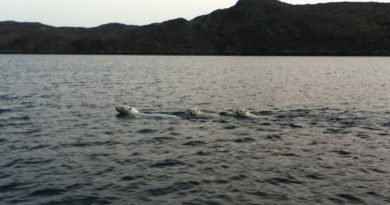‘Exotic’ species showing up in Canada’s Arctic
People in Nunavut are encountering plant and animal species they have never seen before in Canada’s Arctic, species more commonly seen south of 60.
Life forms that are not native to Nunavut’s environment have started showing up in the last few years, including a wasp-like insect that was recently photographed by Niore Iqalukjuak of Arctic Bay.
It was an insect species not usually seen in the North.
“I didn’t know what it was. I thought it was a toy when I first saw it, because it was just on the ground, it was so nice and shiny,” Iqalukjuak told CBC News. “I thought of picking it up, but then it started to move.”
Longtime Iqaluit resident Louise Flaherty said she found some unusually tall plants in the area last summer.
“I’ve been here about 20 years and I’ve never seen these things growing in Iqaluit,” she said. “I don’t know if they are native to this specific place, but I’ve never seen them before.”
15 exotic species
Flaherty sent a photograph of the plants to Nunavut’s Environment Department.
“They identified it as something called a northern tansy mustard, which is a species that was identified in some parts of Nunavut in the past, but never much around Iqaluit,” said Steve Pinksen, the department’s director of policy and planning.
Pinksen said species that are foreign to the North have been popping up recently around the territory.
“There’s 15 species that have been identified as exotic, meaning species that weren’t historically in Nunavut,” he said.
“They’re almost all plants; there’s 13 of them that are plants.”
The other two exotic species are birds: “That’s a European starling and the house sparrow — two small birds that have shown up in the past few years that were never recorded previously,” Pinksen said.
Pinksen would not say if climate change is causing these species to come north, as there could be other ways they have landed in the region.
For example, he said, the exotic plants could have been introduced to the North through bird droppings or from traces of soil left on somebody’s footwear. They could also have been planted on purpose, he added.
Some insects could have been brought north aboard cargo on ships and planes, Pinksen said.
But Pinksen said if the Arctic climate continues to warm up, species closest to the Arctic would be the first to move north.
To watch video, click here.
Originally posted July 11, 2011



